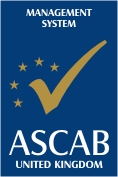From farm to fork - ISO recipe for successful food supply chains
Date : 22 February 2012
ISOs solutions for ensuring quality and safety in the food industry are the subject of a new brochure - ISO & food – which provides a concise overview of International Standards available and how they can help.

Today more than ever, food products regularly cross national boundaries at every stage of the supply chain. ISO International Standards create confidence in the products we eat or drink by ensuring the world uses the same recipe when it comes to food quality, safety and efficiency.
The new brochure underlies the benefits of ISOs consensus-based approach, which provides a platform for developing practical tools through common understanding and cooperation with all stakeholders on board – from agricultural producers, to food manufacturers, laboratories, regulators, consumers, etc.
Out of more than 19 000 ISO International Standards, some 1 000 are specifically dedicated to food, and deal with subjects as diverse as agricultural machinery, logistics, transportation, manufacturing, labeling, packaging and storage. ISO standards bring together state-of-the-art knowhow and disseminate it to both developed and developing countries. They are therefore powerful tools for taking action on global challenges.
The brochure highlights the benefits of ISO standards for industry, regulators and consumers, and argues that by implementing voluntary ISO standards, companies make a proactive commitment to the principles they stand for: quality, transparency, accountability and safety.
ISO works closely with key stakeholders in the food supply chain to ensure the relevance and market uptake of its standards. ISO’s multi-stakeholder approach consolidates contributions from industry, government, research, academia, international organizations and NGOs. Some of the organizations contributing to ISOs food standards include the Codex Alimentarius Commission, the Food and Agriculture Organization, the Global Food Safety Initiative, the International Dairy Federation and World Health Organization, among many others.

